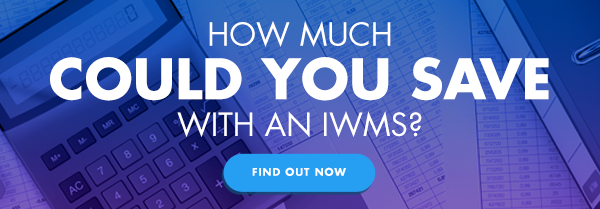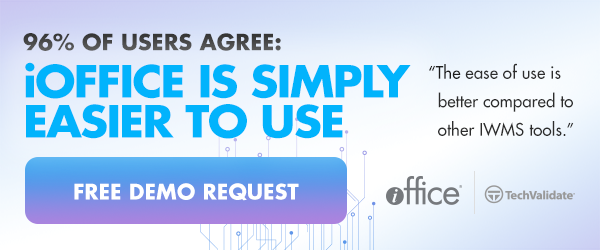How to Find the Best IWMS Software


When you’re searching for the best IWMS software you have a lot to consider. Those questions include: How well does it integrate with our existing software, how often do you need to make upgrades, what facility management metrics does it track, how does the pricing model work and much more. We’ve included everything you need to know to find the best IWMS software below.
First there are the obvious concerns about functionality when searching for the best IWMS software. You need to think about which features you need to support your business goals, whether it’s better space management, more efficient facility maintenance or allowing employees and visitors to more easily navigate your corporate campus and reserve rooms. However, even if a software system seems to check all the boxes in terms of functionality, it might still be a terrible user experience. It might not play nicely with your other software systems. And it might come with hidden costs.
No one wants to be stuck with buyer’s remorse, especially when it’s an investment that impacts your entire organization. To be sure you’re choosing the right IWMS software, ask these eight essential questions.
Questions to Ask to Find the Best IWMS Software
- How Well Does It Integrate With Our Existing Software?
- How Often Do We Need to Make Upgrades?
- What Facility Management Metrics Does it Track?
- How Does the Pricing Model Work?
- What’s Involved In Implementing Your IWMS Software?
- Does It Have Mobile Apps Available For Employees?
- Can We See Detailed Views of our Floor Plan?
- How Easy Is It For Users To Learn the Software?
1. How Well Does It Integrate With Our Existing Software?
Ripping out and replacing existing systems can be costly and frustrating. But navigating between multiple software systems is tricky, especially when changes made in one system aren’t reflected across others. That’s why it’s important to be sure the IWMS you choose integrates with other systems you use for room scheduling, maintenance and even employee communication.
iOFFICE has integrations with a variety of different systems, apps and APIs, including:
- AutoCAD and Revit
- Calendar apps, including Google Calendar, Microsoft Office 365 and Outlook
- Slack collaboration software
- IoT sensors, including Current, Occupeye and Relogix
- Project management software, including Planview
- Space planning software, including Space Trak
- Digital signage, including Visix and Roam
When you think about what you need in an IWMS software system, don’t just think about facilities management. Think about what systems your HR and IT teams use and how the new system will fit into those. For instance, can it connect with your employee directory for easy onboarding? iOFFICE makes it easy to automatically import users using a basic HR file or an active directory.
2. How Often Do We Need to Make Upgrades?
Upgrades can be time-consuming and frustrating, especially when they slow down your software system. Unfortunately, large IWMS systems tend to require regular upgrades.
Since iOFFICE is a true Software as a Service (SaaS) platform, our upgrades are as painless as the updates on your smartphone apps. We notify our customers when we introduce new features and functionality and make it available free of charge.
3. What Facility Management Metrics Does it Track?
Facilities managers who were once focused primarily on managing buildings are taking on more responsibility managing people, places and resources. With increased responsibility comes added pressure to show success. Traditional metrics revolving around occupancy, vacancy and density are no longer enough.
Today’s facility management professionals and workplace leaders need IWMS software with robust reporting capabilities. They need to be able to easily see the cost of square footage per employee and what percentage of space is not only occupied, but how that space is actually being used on any given day. They need to be able to keep track of those metrics in real time and make them easily visible across the organization.
We know the only way we can succeed is if you do. That’s why we’ve built out a comprehensive reporting software that includes dashboards updated in real time, as well as the ability to create and share reports that make data easier to digest.
Check out this blog post for more tips on how to get better data from our IWMS software.
4. How Does the Pricing Model Work?
If you’ve ever felt pressured into buying a “fully loaded” vehicle with a dozen new features when you just wanted a basic model, you know how frustrating it is to pay for something you don’t want or need.
You shouldn’t have to be talked into an expensive IWMS software system you don’t need, either. That’s why we’ve built our pricing model in a way that allows users to only pay for the modules they want. If all you need is space management software and a way to coordinate moves, we have it. If you decide to add asset management software a few months later, it’s easy to make an upgrade.
Make sure the system you choose makes it easy to add new sites and new users as well without adding significant costs.
5. What’s Involved In Implementing Your IWMS Software?
Poor implementation can ruin even a good software system. That’s why it’s so important to ask questions about the implementation process before you make a decision. Your software provider should be able to tell you who your point of contact will be for the project, what key stakeholders should be involved from your team and what the timeline will look like.
The iOFFICE team takes IWMS implementation seriously. We assign an implementation manager to each project who supports and advises your team every step of the way.
Our implementation process starts by reviewing your objectives, expectations and timeline. From there, we gather data from your team— including occupancy data and floorplans—and recommend design configurations. We build data workflows around the approved design to ensure you receive all the information you need. Then we test the workflows to verify everything is working properly. To keep these all these tasks moving forward, we use a cloud-based project management software that provides full transparency between our team and our customers about specific steps and the status of the project.
During implementation, we are working in a live site because iOFFICE is intuitive and easy to use. By the completion of implementation, the customer project team is well-versed on how to use the application. However, we do provide in depth training to ensure a smooth transition prior to launch.
6. Does It Have Mobile Apps Available For Employees?
While IWMS software has traditionally been a facility manager’s domain, it impacts so many other areas of your organization today that others will inevitably use it in some capacity—including employees.
Employees don’t need to access your space management software, but they do need to be able to find their way around, reserve space, request service and receive visitors and mail. And they should be able to do that wherever they are, via mobile workplace apps.
7. Can We See Detailed Views of our Floor Plan?
Some of our customers have told us they’ve used other systems that seemed to be sophisticated, only to discover the user interface was a disappointment.
Floor plans appeared as not much more than boxes, and it was difficult to view detailed information from them. We knew how important this was, and we wanted to get it right. That’s why our Space Manager allows users to be able to actually interact with floor plans in a variety of ways, including:
- Hovering over rooms to see room numbers, type, occupants, square footage, phone extension and assets
- Zooming in and out with a simple slider
- Selecting another building or floor to search for assets and people
- Creating scenarios for potential moves
- Adding notes and annotations to your floor plans
This advanced functionality is one of the biggest factors that separates our IWMS software from others. It makes it easy to manage space, moves and more.
8. How Easy Is It For Users To Learn the Software?
All this functionality may sound exciting or intimidating, depending on who you ask.
A good IWMS should have enough capabilities to be robust, but it should also be intuitive and easy to use, even for people without a background in facilities management. Project managers tasked with managing moves may not be familiar with IWMS software, but they should be able to learn to use it within a few hours.
Ask for a demo of the software you’re considering, and invite others from your team to join and ask questions.
With so many IWMS software systems on the market, there’s a lot to consider. Take the time to define your goals and the functionality that’s essential first. Before you go any further, make sure it’s within your budget and will integrate with your existing systems. Then, take a close look at some of the less obvious features, including the user interface for both administrators and employees. Don’t be afraid to take your time and ask a lot of questions. Choosing the right system may take a little longer than you expected, but you’ll be glad you did your homework. Your team will thank you, too.
Ready for a closer look at iOFFICE’s IWMS software? Request a demo today.

